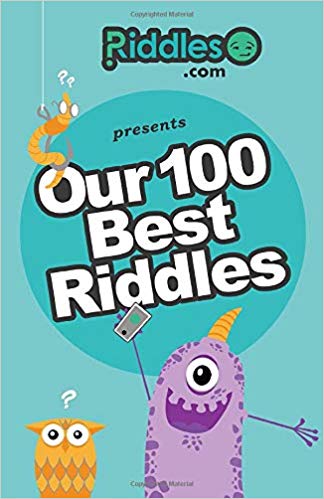Enter a keyword into the search box. The riddle search will check to see if the word is in the Title, Riddle, or Answer and return results if they exist.
"Word" Riddles - Next 10 of 307.
Riddle:
The king of the jungle, rare as gold, black as night, in light not there and night not seen. Goes in water, goes on trees, goes in caves, goes on the ground. Claws of knives, teeth of swords, roar of death but silent as a mouse. What is it?
Answer: A black panther (black jaguar)
Riddle:
Lobi's brother is MobiLodi's brother is ModiLofi's brother is MofiLoki's brother is ____HINT: It's a four-letter word
Answer: Thor.
Riddle:
This is an unusual paragraph. I'm curious how quickly you can find out what is so unusual about it? It looks so plain you would think nothing was wrong with it! In fact, nothing is wrong with it! It is unusual though. Study it, and think about it, but you still may not find anything odd. But if you work at it a bit, you might find out! Try to do so without any coaching! What is unusual?
Answer: The entire paragraph has no 'e'.
The most commonly used letter in the English language is E, appearing in approximately 11% of common English words and being one of the most frequent keys on a keyboard.
Riddle:
I am a four-digit number and when converted to a Roman numeral I become a common 3 letter word meaning "Blend." What number am I?
Answer: 1009 means MIX IX=9 M=1000.
Riddle:
How do you spell COW in nine letters?
Answer: Hamburger.
Riddle:
Many years ago, a group of friends and I were hiking through a dense forest near my home, when one of the group stopped and made a suggestion to everyone. Just as the last words left his mouth, we all scattered, and for the very first time, I saw It! It was bigger than most of us, and It was fast -- too fast for my friends, unfortunately. As I ran to try to hide from It, I heard the screams of my comrads behind me. It quickly closed in on them, eventually rendering each of them motionless, and helpless -- and at Its mercy! As I was hiding myself from It, I saw It grab and totally immobilize three more of my closest friends. It was relentless in Its pursuit. My heart raced within my chest as It approached my hiding place. I realized I was the last survivor, but was overmatched by Its speed and power. As It grabbed me, It growled three words at me!!! What were those three words?
Answer: The three words were, “Tag, you’re It!” We stopped on our hike to play a game of Freeze Tag, and since I was the last one caught, my turn to be It was due.
Riddle:
You are stuck in a room. On the door is a keypad with all the letters of the alphabet and the enter button. The word is 7 letters long. To your left, is a table with a note. The note reads: Sulfer Carbon Iodine Einsteinium Nitrogen Cerium On the other side of the room is a billboard. On the billboard there is a note pinned to it. On this note, it says: After solving the note upon the table, remove a letter and you will be free." What is the code to escape?
Answer: The code is “science” After solving for the first note, you will get “sciesnce.” If you don’t understand why, go to the Periodic Table of the Elements and find these elements there. From the second note, you remove the ‘s’ which leaves you with ‘science’ I came up with this my self when I was looking at the periodic table. Thank you for reading my Escape Room.
Riddle:
Find an English word which is singular, add an "s" and it becomes plural, and add another "s" it becomes singular again. What is it?
Answer: There are actually 3 correct answers: Caress. Princess. Brass.
Riddle:
Which word is the odd one out: First Second Third Forth Fifth Sixth Seventh Eighth?
Answer: Forth. It is incorrectly spelled.
Riddle:
Which word does not belong with the others? niart, emag, tluda, mom, dad, mistag, yub, or sega
Answer: Mistag. It is the only one that backwards does not make sense. Train, game, adult, mom, dad, gatsim, buy, and ages.

